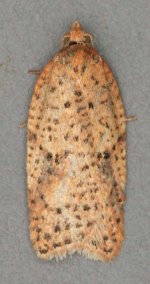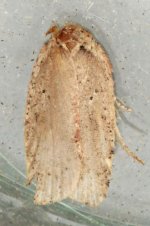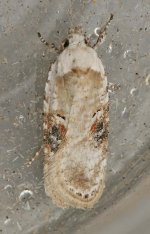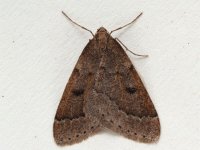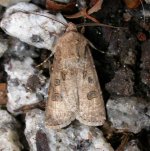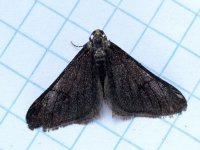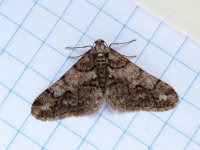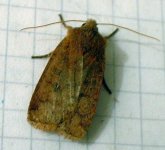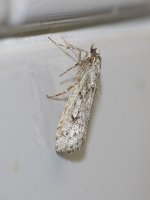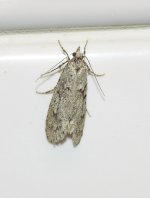Pete, I like the spider! Funnily enough I photo'd at least 12 different ones I found doing the plot sampling over the weekend at Raglitz, all under 1cm body length. No I am not about to start spiders, but a photo record can't do any harm, somebody may find the data useful.
I also trapped at our Orchard on Friday (mickey mouse lamp) and Saturday(Andrews, 'Robinson').
Friday was warmish 7°C+, but a strong wind blowing from over snow, meant uncomfortable conditions to stand around in. At 23:00 it was 4°C, and results;
Dotted Border 1
Barred Tooth-striped 1
Saturday was a pleasant 11°C but cloudless. 22:30 3°C.
Early Moth 2
Barred Tooth-striped 1
Plumed Prominent 1
Earlier I got a
Ypsolopha ustella in the house, which must have been brought it in with firewood.
On Saturday night, a local Mother Peter Buchner came round for the first time, and we did alot of catch up ID work from 2005 while the light was on outside. I take my hat off to this man, he started 5 years ago, has caught, photographed, (gen prep.'d when necessary), and made a picture folder presentation of the normals and variants of 1680 specie 3-5 km from Raglitz!! His work is absolutely amazing,(some of his early work is in the Austrian Schmetterlinge link amongst Ken's URL thread) and we now look forward to meeting more regularly. 2006 is looking good.
Question; Early Moth
Theria primaria and
Theria rupicapraria, according to a book I have here they are the same moth, only
T. primaria is a variant and is less distinctly marked. Looking at photos I see it, but find the point debateable and in the West of Austria both forms are found. In the east we only have
Theria rupicapraria see attached example. Opinions please.
Cheers for now B

Jim




